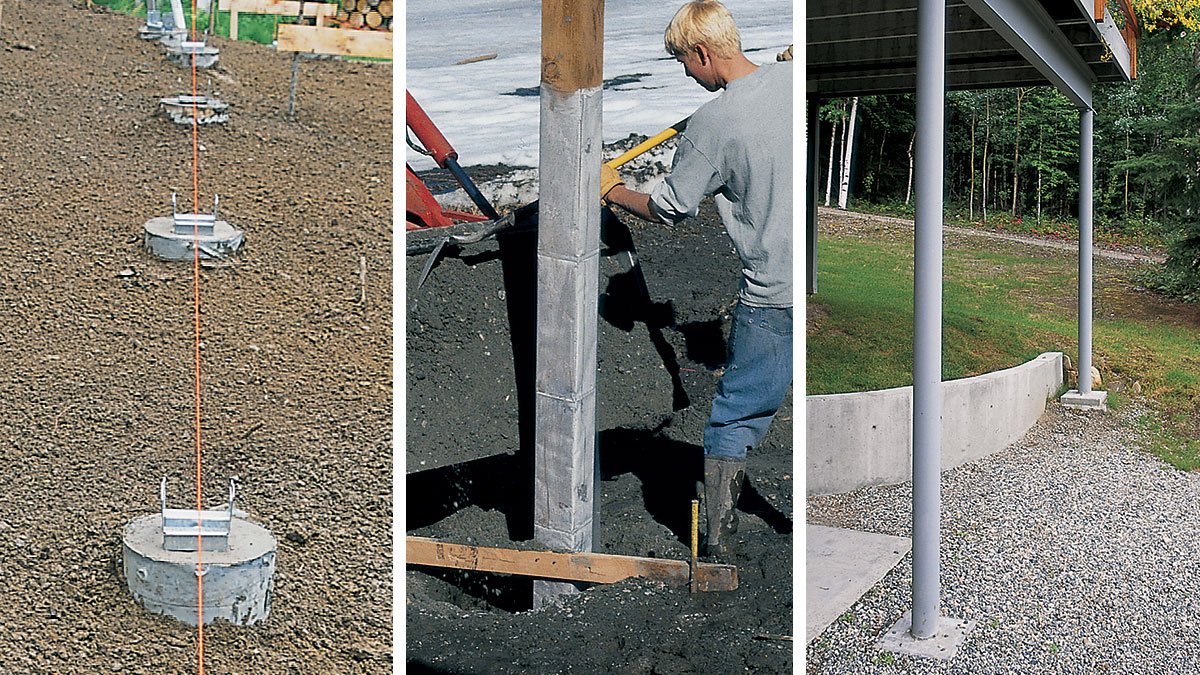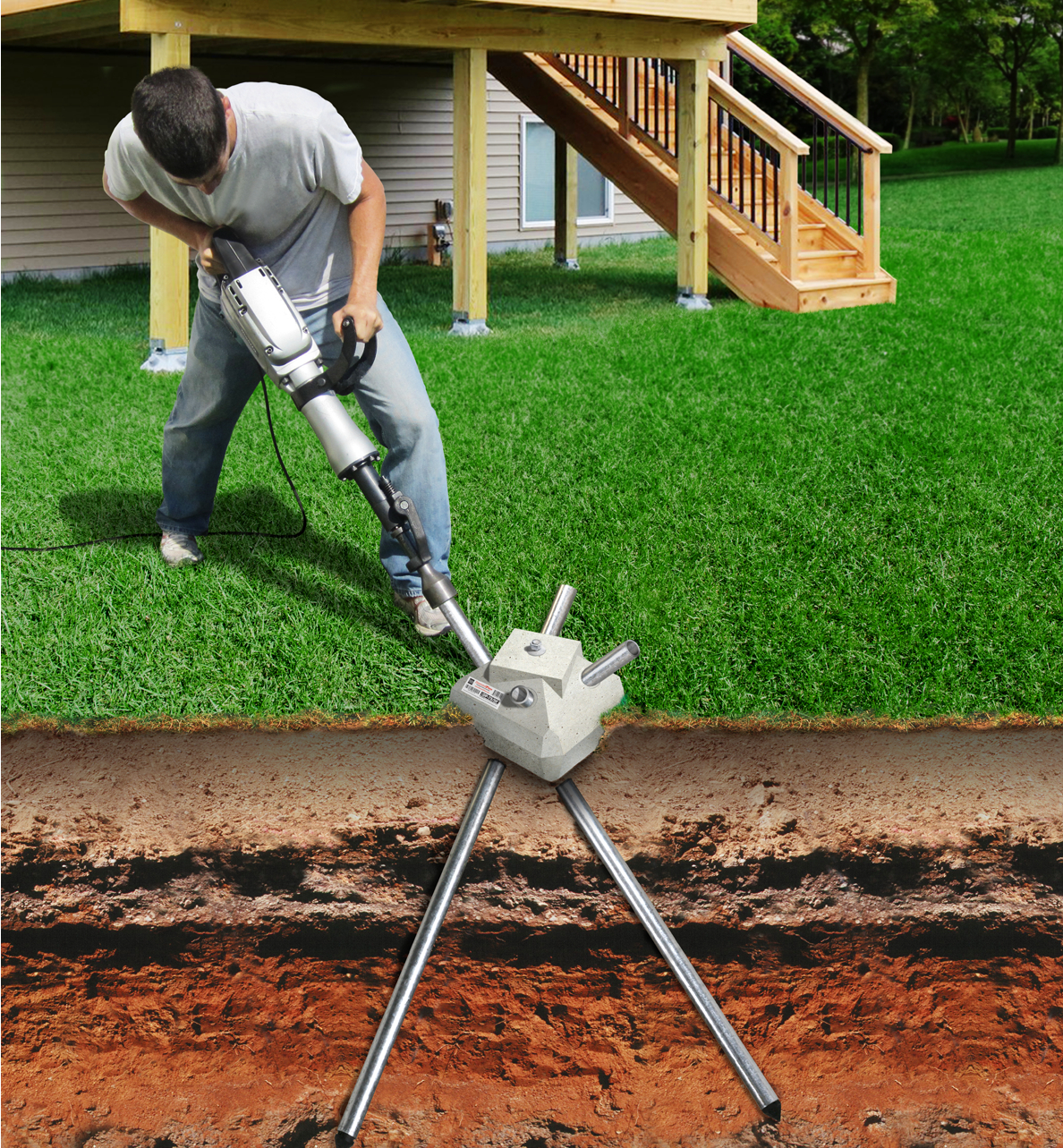Take Full Advantage Of the Life Expectancy of Your Deck With Solid and reputable Footings
In order to totally take full advantage of the lifespan of your deck, it is vital to ensure that it is developed on trusted and strong footings. These grounds create the foundation of your deck, giving stability and support, and are usually the difference between a deck that lasts for years and one that calls for constant repair work. In this discussion, we will check out the value of trustworthy grounds, the various kinds of solid ground materials, appropriate installment techniques, and just how to maintain and examine your deck's footings to prevent damage.
Importance of Dependable Footings
The relevance of dependable footings can not be overemphasized when it involves making the most of the life expectancy of your deck. The footings function as the foundation whereupon the entire structure rests, offering security and assistance. Without a strong ground, the deck is at risk to changing, sinking, and also collapse, which can dramatically reduce its lifespan and pose safety risks.

Picking the right type of footing is likewise critical. Hiring a professional to examine the dirt, layout the grounds, and make certain proper setup is very suggested.
Spending in reputable grounds may involve added cost and initiative upfront, yet it is a beneficial financial investment that will certainly add to the long-term resilience and security of your deck. By making certain a strong foundation, you can appreciate your deck for several years ahead, recognizing that it is developed to stand up to the test of time.
Types of Solid Ground Products
To guarantee the security and durability of your deck, it is necessary to think about the different kinds of strong footing products readily available. The option of footing product is essential as it supplies the required assistance and security to withstand the weight and lots of the deck framework.
One common and reliable material used for deck grounds is concrete. Concrete footings are durable and supply outstanding stability. They can be put directly right into the ground or utilize precast concrete grounds for simpler installment. An additional choice is helical piers, which are steel shafts with helical plates that are screwed right into the ground. These piers use excellent load-bearing ability and can be used in numerous soil problems.
For locations with poor soil problems, such as expansive or loose soils, a ground system that makes use of steel or composite piers may be liked. Deck Footings. These piers are driven deep into the ground to reach steady dirt layers, guaranteeing the security of the deck
In some cases, deck footings can additionally be constructed utilizing cured lumber. It is crucial to ensure that the lumber is appropriately dealt with to resist rot and degeneration created by exposure to wetness and pests.
When choosing a ground product for your deck, it is important to consider variables such as dirt conditions, environment, and local building codes. Consulting with a specialist specialist or structural designer can help establish the most ideal ground product for your specific deck job.
Correct Installment Techniques for Footings
Thinking about the relevance of making certain stability and durability for your deck, it is important to understand the proper setup methods for footings. The success of your deck job counts heavily on the stability of its structure, which is why adhering to the right setup methods is crucial.
Most importantly, it is required to identify the suitable dimension and deepness of the footings based on the layout and tons requirements of your deck. This info can be obtained from building codes or via appointment with a structural engineer. As a basic policy, footings need to go to least 12 inches in size and prolong below the frost line to stop changing or clearing up.
When the dimensions are developed, the next action is excavation. Digging the openings for the footings must be finished with precision, ensuring they are deep sufficient and have a level base. Deck Footings. This will provide a secure base for the footings
To better improve the stability of the grounds, it is recommended to utilize a concrete mix with a toughness of at the very least 3,000 psi. This will certainly guarantee the grounds click to read can endure the weight and pressures exerted by the deck.
Throughout installation, it is necessary to keep the grounds degree and lined up effectively. This can be achieved by making use of a level and string lines to assist the placement of each ground.
Keeping and Examining Your Deck's Grounds
Regular maintenance and comprehensive examinations are important for making certain the long-term stability and safety and security of your deck's grounds. In time, grounds can surrender to tear and use, weather, and soil activity, which can compromise their structural honesty. To optimize the lifespan of your deck's footings, it is vital to execute a normal upkeep routine and carry out detailed inspections.

Furthermore, it is essential to check footings for any type of indicators of damage or damage. This includes monitoring for splits, splits, or falling apart concrete, as well as any type of indicators of movement or settlement. Any type of issues ought to be addressed quickly to protect against further damage and make certain the security of the deck.
Additionally, it is suggested to evaluate the surrounding dirt for any signs of erosion or moving. Dirt activity can impact the stability of the footings, so it is necessary to address any soil-related problems immediately.
Indicators of Ground Damage and How to Address Them
Footing damage can present significant threats to the security and safety of your deck, making it learn this here now vital to immediately recognize and resolve any kind of indicators of deterioration. One of one of the most common signs of footing damage is sinking or settling of the deck. This can occur due to dirt disintegration, poor footings, or poor construction methods. If you discover that your deck is unequal or leaning, it is vital check this to take prompt activity to stop further damages. One more indication of footing damages is breaking or falling apart of the concrete grounds. This can be brought on by freeze-thaw cycles, too much moisture, or poor quality concrete. If you observe any fractures or wear and tear in the grounds, it is crucial to have them examined and fixed by an expert. Furthermore, if you notice any kind of motion or shifting of the deck, such as a deck that really feels unsteady when walked on or totters when weight is applied, it can be an indication of footing damages. In such cases, it is advised to seek advice from an expert contractor or an architectural designer to examine the extent of the damages and determine the proper strategy. Bear in mind, attending to ground damage without delay can help make certain the long-term security and safety and security of your deck.
Verdict
To conclude, making sure the integrity and strength of footings is critical for optimizing the lifespan of your deck. By utilizing solid ground products and properly installing them, you can stop damages and maintain the stability of your deck. Routine upkeep and examinations will also help identify any kind of signs of footing damage and enable for prompt fixings. Ultimately, taking these steps will certainly help preserve the stability and long life of your deck.
These grounds develop the foundation of your deck, offering stability and assistance, and are usually the distinction in between a deck that lasts for decades and one that requires constant repairs. In this conversation, we will explore the significance of dependable footings, the different types of strong footing materials, correct setup methods, and how to keep and examine your deck's footings to stop damage.Normal maintenance and comprehensive examinations are necessary for guaranteeing the long-term security and safety of your deck's grounds. Remember, addressing ground damage immediately can help make certain the long-lasting stability and safety and security of your deck.
By utilizing solid footing products and correctly installing them, you can prevent damage and maintain the stability of your deck.